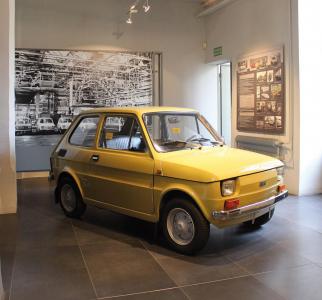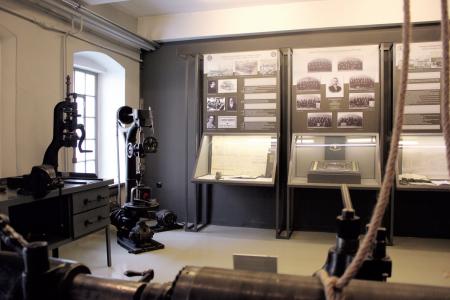From weaving to the Fiat 126p
The Industries of Bielsko-Biała in the 19th and 20th centuries
The exhibition presents the history behind the expansion of industry in Bielsko-Biała and introduces us to the world in which the machines and equipment amassed in the Museum used to function. Portraying the industrial side of the twin towns, it reminds us of the significant economic role it played during the times of the Habsburg Monarchy (until 1918), the Second Polish Republic (1918-1939), the Third Reich (1939-1945) and finally the Polish People’s Republic (1945-1989). The richly illustrated information boards and glass cases containing exhibits which are located in the former factory foyer invite us to go on an incredible journey into the past. There are chronologically arranged lists of the most important events and interesting facts; town panoramas with a multitude of factory chimneys towering above the roofs, views of the production plants, portraits of the industrialists, advertisements; original documents, books, brochures, medals, decorative plates, and technical accessories. A large reproduction of a 1904 Bielsko-Biała town plan shows the location of industrial plants and familiarises visitors with the names of the companies operating at that time. Special information boards are dedicated to the Büttners’ broadcloth factory – the seat of today’s Museum. The ‘tool-making’ room boasts exhibits associated with the metal and machine-making industry, e.g. a hundred-year-old antique lathe and column drills. The newest section featuring ‘The City of a Hundred Industries’ and the automotive industry contains a carefully restored ‘Maluch’ – the Fiat 126p, manufactured in 1977 in the Compact Car Factory in Bielsko. The historical exposition is complemented by a small cinema room showing films relating to industry, such as ‘From Raw Wool to Broadcloth – Textile Production in Bielstyl’.







